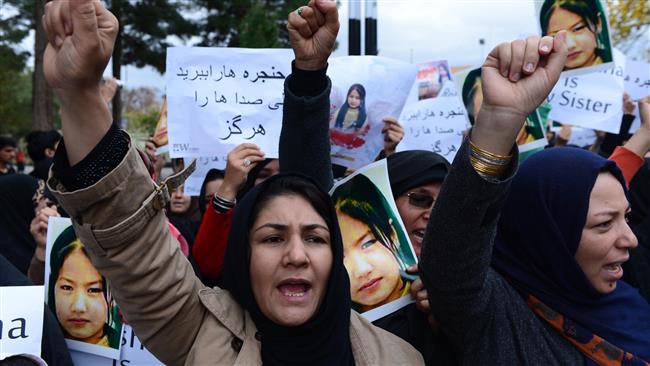Afghans keep up protest against insecurity

Hundreds of people have rallied across Afghanistan, protesting nationwide insecurity a day after thousands marched in the country’s capital outraged at the beheading of seven members of the mostly Shia Hazara community.
On Wednesday, an estimated crowd of 10,000 marched on the presidential palace in Kabul reacting to the discovery of the bodies of the victims — four men, two women, and a child — in the southeastern Afghan province of Zabul on Saturday. Taliban militants are suspected to have killed the seven, who had been kidnapped in the neighboring Ghazni Province nearly six months ago.
Protests continued on Thursday in the provinces of Balkh in the north, Herat in the west, and Nangarhar in the east, with demonstrators holding up banners with photos of the victims, The Associated Press reported.
Lilia Mohammadi, a protest leader, said the bodies would be returned to Ghazni later in the day, adding that government officials were expected to respond to the demands of the organizers of the Wednesday demonstration.
Afghanistan’s National Directorate of Security has dismissed Taliban claims that they had been killed by affiliates of the Daesh terrorist group, which operates mainly in Syria and Iraq.
In a recent televised address, Afghan President Mohammad Ashraf Ghani vowed revenge for the killings.
“We are committed to taking revenge for our countrymen’s blood. In this way, we will not spare any effort. But you have to remember that anything can happen if we don’t control our feelings. We should avoid reactions that could result in anarchy,” he said.







